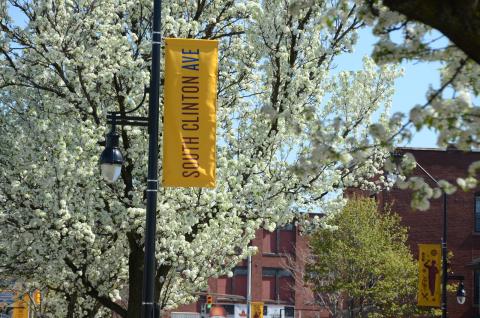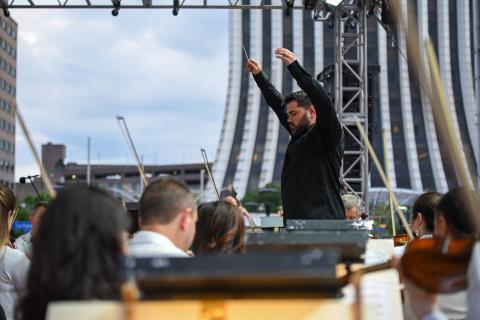Heritage Trail
What is the Heritage Trail?
Come and explore history in downtown Rochester on The Heritage Trail, a 1.25-mile long walking path that leads visitors to 15 points of historical significance. This self-guided tour follows an 8” wide line of either granite or blue paint on city sidewalks, along the way visitors will find historical markers, plaques, and interpretive signs telling some of the stories that make up Rochester’s rich history.
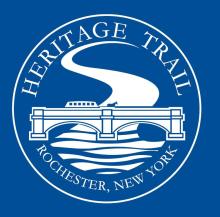
Where is the Heritage Trail?
Currently, the trail runs between the Susan B. Anthony House (17 Madison Street) to the second Erie Canal Aqueduct Bridge (50 West Broad Street). A future extension of the trail will lead to the Rundel Memorial Library located at 115 South Avenue.
Click here to download the Heritage Trail Brochure and Map (pdf)
View the Interpretive Signs:
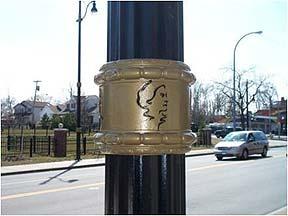
- Harnessing the Power of the Genesee River
- Transportation and Commerce
- The Legacy of Nathaniel Rochester
- The Center of Government and Commerce
- Child’s Basin: Center of Activism
- Child's Basin: Center of Commerce and Intellect
- The 100 Acre Tract: The Heart of the Village of Rochester
- Rochester: Center of Freedom
- Crossroads of Transportation
- Corn Hill: Heart of Pioneer Wealth
- Traces of the Past
- Susan B. Anthony: Leader for Women's Rights
- Transformation of a Neighborhood

Project Beginnings: A Community Collaboration
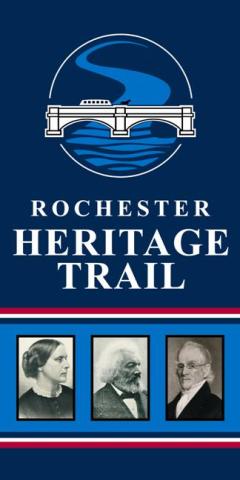
The idea for the project was based on the long-standing efforts of local history . The realization of the project is taking place through a public –private collaboration and is being realized piece by piece as the trail comes to life through various engineering projects in the area. Funding for the preliminary phases of the system was provided by the Lloyd Klos Fund of the Rochester Area Community Foundation, New York State, Federal Highway Administration and the City of Rochester.
The first phase of the trail was installed in 2007 as part of the City’s West Main Street Streetscape Improvement Project. This project installed an 8” wide ‘line’ of granite set in the sidewalk along the north sidewalk of W. Main Street from Madison Street on the west to Broad Street on the east.
Since this installation, the Rochester/ Monroe County Freedom Trail Commission, in concert with Monroe County, sponsored the fabrication and installation of five interpretive signs. The City utilized a Lloyd Klos Fund grant from the Rochester Area Community Foundation to design the content for five of the interpretive signs and subsequently install them.
Next, the Broad St Tunnel street project continued the work of the thematic corridor. In addition to signs, the Broad Street Tunnel project incorporated a number of ‘history rooms’ in the Broad Street sidewalk; making the trail even more dynamic. Each room has etched granite header curbs surrounding the perimeter, unique Heritage Trail themed pavement designs, interpretive signs, precast sidewalk medallions, ornamental bollards, and ornamental poles supporting custom designed banners.
Heronsbend Production, in association with Austin Design, performed the historic research and design of the interpretive panels. TYLin International designed the physical attributes that make up the public amenities of the Heritage Trial, Sealand Construction Corporation installed the public amenities.



